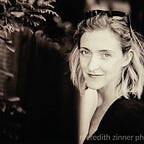11/100: Love and Atheism
This article looks at Day 11 in a series of 100 visits detailing what happens at my local library
It’s not unusual for people to come to the library in pairs, but today is the first time I’m bearing witness to what is unmistakably a study date.
The couple is slightly older than college age if I had to guess - grad students of some sort, maybe law or medicine. They sit on the other side of the room so I can’t get a nice nosy look at whatever it is they’re working on. Their affection for each other, though, I could spot from a mile away.
It’s not as if they’re making a big show of PDA or anything, but love, especially young love, tends to make itself known. The way he suggestively raises his eyebrows in jest when she removes her sweater, and how she responds with a smitten eye roll. How she takes a sip from his coffee mug and he feigns shocked indignation. Their little jokes.
This is how love, or at the very least infatuation, plays out with no sound.
In light of yesterday’s fun fact about Bible theft, I’ve returned to the religion stacks this morning with the view of reading up on some that I’m unfamiliar with — which is most if not all of them. It’s a tall order: there are thousands of books — all manners of encyclopedias, sacred texts, prophet biographies, and interpretations of ancient scrolls. Unsurprisingly, Christianity gets the most airplay, possibly because there are just so many darn offshoots of it. Still, hefty collections are dedicated to Judaism, Islam, Buddhism, Hinduism, Sikhism, and Taoism as well — each of these occupies at least an entire bookcase unto itself.
I’ve always been overwhelmed by too many choices, so I bypass all of these in favor of a single, half-empty shelf that houses the entirety of the library’s literature on atheism and agnosticism. There are six identical copies of Julian Baggini’s Very Short Introduction to Atheism; being a huge fan of the Introduction series, this is the obvious choice.
An atheist himself, Baggani explains that the belief system (or lack thereof, depending on who you ask) is generally characterized by the principle that there is only the natural world and not any supernatural one. This feeds into the concept of physicalism, which asserts that the only kind of stuff that exists is physical stuff — most atheists are on board with this.
Where atheism gets its bad reputation — that of nihilistic misanthropy — is in the subsequent assumption that physicalism necessarily conveys that anything that isn’t ‘physical stuff’ must not exist at all.
By this logic, atheists would deny the existence not only of God but also of emotions, morals, and the mind itself — the latter being a distinct entity from the brain, which is a physical object.
Personally, contemplating this distinction hurts both my mind and my brain. Baggani must realize his explanation gets a little twisted because he follows it with this:
“If this seems a little difficult to get a grip on, just consider love. No one thinks that love is some kind of physical object. Yet many people believe in love, feel love, give love, and so on”
I think the point he’s trying to make is that because atheists deny God’s existence based on the lack of physical evidence of Him/Her/Them, people wrongly assume they also deny the existence of all things for which there are no physical proofs, which is crazy.
Love makes it difficult to argue that intangible things aren’t real; even the most unbelieving of skeptics would admit that the two sweethearts sitting opposite me share something that exists beyond physical objects. It’s palpable through other means: how the most unextraordinary moments become extraordinary because they are theirs: the way she playfully mocks him when he sneezes. The sly, knowing smile they share when he shows her something on his phone. The mutual feeling of being watched by a strange woman in the corner reading about atheism.
Thanks for reading! Enjoying this series? You might also like:
When I Learned Reading Isn’t Dead
100 Days at the Library: Intro
